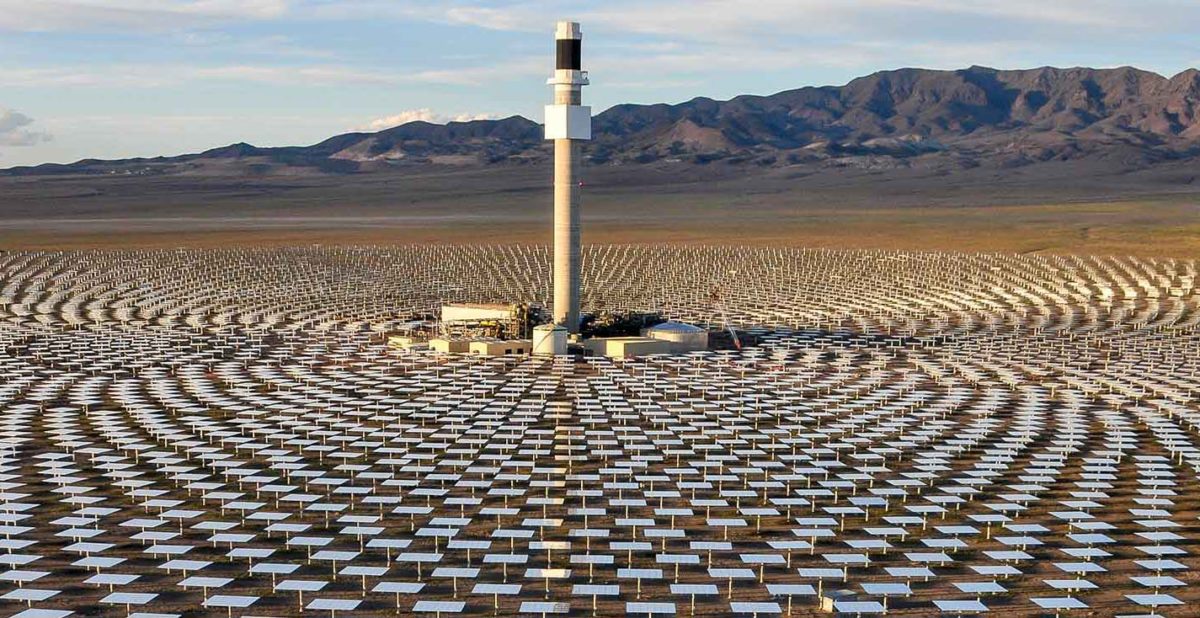Heliostats are key components of concentrating solar-thermal power (CSP) technologies, and the Heliostat Consortium aims to drive down costs and advance manufacturing. The consortium, HelioCon, is led by the U.S. Department of Energy’s (DOE’s) National Renewable Energy Laboratory (NREL), with partners at Sandia National Laboratories and the Australian Solar Thermal Research Institute.
A heliostat is a device that contains a mirror, and they work by tracking the sun in order to reflect sunlight to a receiver, where it can be stored as heat for long duration energy storage and converted into electricity. There can be more than 10,000 heliostats in a single CSP plant, representing up to half the cost of system construction and a primary driver of operations and maintenance costs. In order to bring down the cost of energy from CSP plants, it’s imperative to bring down the costs of heliostats.
(Read “Heliogen CSP advances to equipment procurement stage for 5 MW project“.)
DOE’s Solar Energy Technologies Office (SETO) has a target of $50 per square meter, to reach its goal of $0.05 per kilowatt-hour for next-generation CSP plants with thermal energy storage. To address costs, HelioCon will develop standards, metrology, techno-economic analysis, and field deployment technologies. In addition, the consortium seeks to increase domestic manufacturing of solar technologies and to bring more professionals into clean energy careers.
“Low-cost CSP can help us achieve a net-zero energy sector,” said Avi Shultz, SETO CSP program manager. “CSP’s ability to directly generate high temperatures at low cost will directly address many industrial applications whose emissions can’t be easily reduced with other technologies or electrified.”
In support of these goals, HelioCon is actively seeking to broaden the community working on this technology through its industry board of advisors and future requests for proposals, which will engage new leaders in this area.
This content is protected by copyright and may not be reused. If you want to cooperate with us and would like to reuse some of our content, please contact: editors@pv-magazine.com.









By submitting this form you agree to pv magazine using your data for the purposes of publishing your comment.
Your personal data will only be disclosed or otherwise transmitted to third parties for the purposes of spam filtering or if this is necessary for technical maintenance of the website. Any other transfer to third parties will not take place unless this is justified on the basis of applicable data protection regulations or if pv magazine is legally obliged to do so.
You may revoke this consent at any time with effect for the future, in which case your personal data will be deleted immediately. Otherwise, your data will be deleted if pv magazine has processed your request or the purpose of data storage is fulfilled.
Further information on data privacy can be found in our Data Protection Policy.